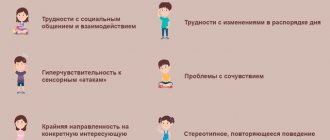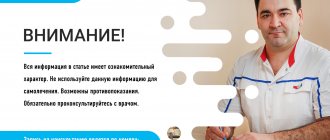Stuttering is a violation of the tempo and rhythm of speech organization, which is associated with a convulsive (contracted) state of the muscles that form speech. Stuttering is known as one of the ancient speech disorders. The essence of this condition, the mechanisms of its development, causes, symptoms and approaches to treatment differed significantly in different periods of the development of speech therapy. Different views on this problem are due to different levels of science, teachings and schools dealing with this condition. In this article we will approach this topic from the perspective of modern teachings and achievements in the field of treatment of this condition.
Stuttering is known as one of the ancient speech disorders.
Causes of stuttering
There are 2 types of causes of stuttering. The former create a predisposition, the so-called “soil” for the development of the disease. The second group of reasons are “impetuses” to development, reasons.
Predisposing reasons
A combination of one of the following unfavorable conditions and a strong irritant (stress) is enough for the development of stuttering in a child.
A lot depends on the parents. If parents have the so-called Neurotic burden, which includes infectious, neurological and other diseases that negatively affect the functions of the nervous system, then all these factors can affect the child. Infections can be transmitted, and increased irritability can negatively affect the child’s mental state.
A lot depends on the parents.
When we evaluate developmental causes, it is important to look back to the period before, during and after childbirth. It is necessary to study the presence of birth injuries, infections, asphyxia and other factors that may affect the functioning of the brain. It is equally important to study the child’s family, because it is likely that among his blood relatives there may be people who stutter.
As for the child’s body, it is necessary to pay attention to its neurogenic characteristics and constitutional predisposition. These reasons include increased vulnerability and irritability, nightmares, enuresis, and diseases of the nervous system. Of course, we should not forget that a child may go through a stage in which age-related anatomical and physiological features of the central nervous system are present.
And of course, one of the most important things is that the child should not feel disadvantaged in the family, should not face alienation and misunderstanding on the part of the parents. It is important to ensure that the baby has enough positive emotions that he receives with his parents.
Producing causes
Quite often, stuttering develops against the background of organic (physical) diseases of the brain, which lead to disturbances in the speech-motor system.
Stuttering often develops against the background of infectious and physical diseases.
Infectious processes accompanied by the development of encephalitis and meningitis can lead to depletion of the nervous system and weaken the centers responsible for the movements of the speech-motor apparatus (measles, whooping cough, meningococcal infection).
Many ENT diseases (laryngitis, tonsillitis, sinusitis) lead to changes in the timbre and intonation of the voice, which also negatively affects the formation of speech.
Mental trauma accompanied by severe fear or fright.
A significant reason is inadequate upbringing of the child. This may include increased demands from the child in learning, the formation of the phenomenon of “exemplary” behavior.
Negative, negative attitude of parents towards the child (severity, anger, strictness).
An equally important reason is the child’s unexpected shock, which can be both positive and negative (“excessive” excitement, stressful situations at school, stressful situations in the family).
Simultaneous acquisition of different languages at an early age causes stuttering, usually in one language
In the case of a child learning several languages at an early age, which leads to increased load on various centers of the brain.
Imitating people who stutter.
How to reduce the risk of occurrence and save a child from early stage stuttering
- Speak to your child slowly and smoothly , evenly and rhythmically. Set a leisurely, relaxed pace for your conversation yourself, rather than asking your child to speak more slowly. By these actions you will help your child speak more fluently, as you will set an example for him.
- Take pauses in your speech , leave empty spaces, especially after the child’s phrases - this gives him the opportunity to say something else, and for you to think about his words. Don't speak just because you need to fill a gap in the conversation. Let your child understand and feel that he can talk for as long as he needs.
- Ask fewer questions , make fewer commands. Questions put pressure on the child and make him feel limited in time to answer. Comment and describe what you are currently doing with your child - this significantly reduces the pressure due to lack of time.
- Directives and commands sometimes contain judgment and criticism. It’s better to start such phrases with the words: “Come on,” “How about...”, “What do you think?”
- Sometimes repeat after your child to make it clear that you listened carefully. The main goal is to reduce the number of questions, orders, commands and use the form of speech in the form of comments and statements. Make your child's speech flow smoothly in conversation.
- Listen to the child , do not interrupt, let him feel that his statements are the most important thing at the moment. Allow your child to start a conversation and choose a topic for conversation. Make relevant comments on the topic. Try not to constantly control the conversation.
- Make eye contact . Don't look away if your child begins to stutter, otherwise you will show that you are uncomfortable. Let your child finish the sentence, even if he has to wait.
- Accept that speaking can be difficult . Sometimes it is so difficult for a child to pronounce a word that he may cry: “I can’t say it,” “I can’t do it.” At this moment, demonstrate an accepting attitude towards the child with phrases: “that was difficult to pronounce,” “that’s a difficult word.” Use these phrases only when your child is very upset, scared, or stressed. In other cases where your child's speech is slurred, maintain eye contact and wait as long as necessary for the child to finish his sentence.
- If at the moment you cannot pay attention exclusively to the child, then tell him that you are doing some work, and after it is completed, give him your full attention and be sure to fulfill your promise!
- Set aside special time for conversation and communication, playing with your child. This greatly helps to increase speech fluency. Use this time to develop a slower pace for your speech. Let your child choose the activity and decide when to start the conversation. By devoting time to your child, you greatly increase his self-esteem, and this helps him slow down his speech rate.
- Give your attention exclusively to the child. Children often lack the exclusive attention of loving parents, this is exactly what children dream of!
This way you will create a positive background around you and your child and give him a flow of positive emotions. Fight for your child's speech!
Symptoms
The main symptom of stuttering is cramps (abnormal contraction of the muscles of the speech apparatus) during speech. Their duration can take from 1-2 to 12-13 seconds, and in some severe cases reach 80 seconds or more.
Be attentive to your child and help him overcome or prevent the development of stuttering.
In children with stuttering, the sequence in the pronunciation of individual words is also disrupted; children lose their train of thought due to pronounced pauses, experience emotional distress and, as a result, acquire character traits of a “defective” person.
Let us dwell in more detail on the feeling of inferiority, since this symptom largely determines the further development and course of stuttering in a child. This feeling is also called “painful fixation” of a stutterer.
There are three degrees of “painful fixation”:
- First Art. (children feel comfortable, and they do not experience embarrassment or shame due to a speech defect).
- Second Art. (children lose a sense of comfort, experience moderate embarrassment, shame due to a speech defect, and try to disguise it)..
- Third Art. (pronounced concentration on their speech impediment, experience severe embarrassment, shame. Usually this degree is noted in children of senior school age).
The effectiveness of treatment for children who stutter directly depends on the degree of “painful fixation.” The higher the fixity, the less favorable the prognosis for speech therapy work.
There are three degrees of stuttering:
- minor - stuttering appears only during excitement (expressed emotions) and during rapid speech.
- moderate - do not stutter at rest and in normal surroundings; Only when emotions are expressed does stuttering appear.
- pronounced - they stutter constantly.
About the disease
Stuttering is a violation of the smoothness and rhythm of speech, in which the child has difficulty pronouncing words and phrases, repeated repetition of syllables or short words, and lengthening of pauses before the start of pronunciation.
The disorder is based on spastic contraction of structures that provide speech function (muscles of the larynx, tongue, soft palate, lips). Spasms are caused by excessive stimulation of the corresponding centers in the brain (speech, emotional). As a result, articulatory, vocal or respiratory contractions occur that prevent the child from speaking smoothly and rhythmically. Most often, stuttering occurs in children 2-4 and 5-7 years old. This disorder is found 4 times more often in boys than in girls. In 50-80% of cases the condition can be corrected. The key to success is timely seeking qualified help. The earlier therapy is started, the greater the chances of getting rid of the speech defect forever.
Survey
The examination of such children should include consultation with specialists:
- speech therapist;
- neurologist;
- psychologist;
- if necessary, consult other specialists.
The main specialist involved in the treatment of stuttering in children is a speech therapist.
In the process of working with children, the speech therapist uses various textbooks, poems, fairy tales, and selects special toys.
The purpose of the examination is to determine the frequency, source of occurrence and form of speech spasms. The degree of stuttering and the patient’s speech abilities are also assessed. The second plan, if any, indicates accompanying speech defects.
At the end of the conversation with the patient, the speech therapist formulates a final conclusion.
Treatment and prognosis
Today, the treatment of such children includes not only medical, but also pedagogical influence.
- Use of medications. A huge number of different groups of drugs can be used in the treatment of stuttering. Let's look at the most common of them:
- 1. Nootropics (piracetam, pantogam, pantocalcin, phenibut).
- 2. Sedatives (valerian, phenibut, glycine, persen, afobazole, adaptol, novo passit). It is worth noting that many nootropics also combine sedative effects.
- 3. Vitamins, especially B vitamins (combilipen, compligam B, larigama).
One of the treatment methods is sessions with a speech therapist.
There are a huge number of methods for overcoming stuttering in children, as well as groups of drugs that can be used in individual cases. Many of you are interested in the question: “Can we help a child on our own, at home and without running to doctors? Is it possible to completely cure stuttering in a child? There are separate techniques that allow you to improve pronunciation and so on by practicing at home, but they are also selected by a specialist. As for the forecast, there is no clear statement. It can be assumed that the younger the child, the more cheerful and positive his behavior, the fewer concomitant psychopathological disorders, the weaker the manifestations of seizures, the better the prognosis.
Prices for services
Appointments, examinations
- Name of service Price/rub. Sign up
- Appointment (testing, consultation) with a medical psychologist3 500
- Expert Consulting
6 500 - Primary appointment (examination, consultation) with a psychiatrist
3 500 - Repeated appointment (examination, consultation) with a psychiatrist
3 000 - Primary appointment (examination, consultation) with a psychotherapist
3 500 - Repeated appointment (examination, consultation) with a psychotherapist
3 000 - Primary appointment (examination, consultation) with a psychiatrist-narcologist
2 500 - Repeated appointment (examination, consultation) with a psychiatrist-narcologist
2 500 - Primary appointment (examination, consultation) with a general practitioner
2 500 - Repeated appointment (examination, consultation) with a general practitioner
2 000 - Appointment (examination, consultation) with an ultrasound diagnostic doctor
3 000 - Primary appointment (examination, consultation) with a functional diagnostics doctor
3 000 - Repeated appointment (examination, consultation) with a functional diagnostics doctor
2 500 - Primary appointment (examination, consultation) with a cardiologist
4 000 - Repeated appointment (examination, consultation) with a cardiologist
3 500 - Primary appointment (examination, consultation) with a neurologist
4 000 - Repeated appointment (examination, consultation) with a neurologist
3 500
Cost of a psychiatrist visiting your home
- Name of service Price/rub. Sign up
- Visit of a psychiatrist (within the Moscow Ring Road)7 000
- Additional payment for traveling outside the Moscow Ring Road (within 30 km)
1 500 - Additional payment for remote travel (from 30 km)
50 RUR/km - Visit of a psychiatrist, doctor of the highest category/doctor of medical sciences. (within the Moscow Ring Road)
15 000










